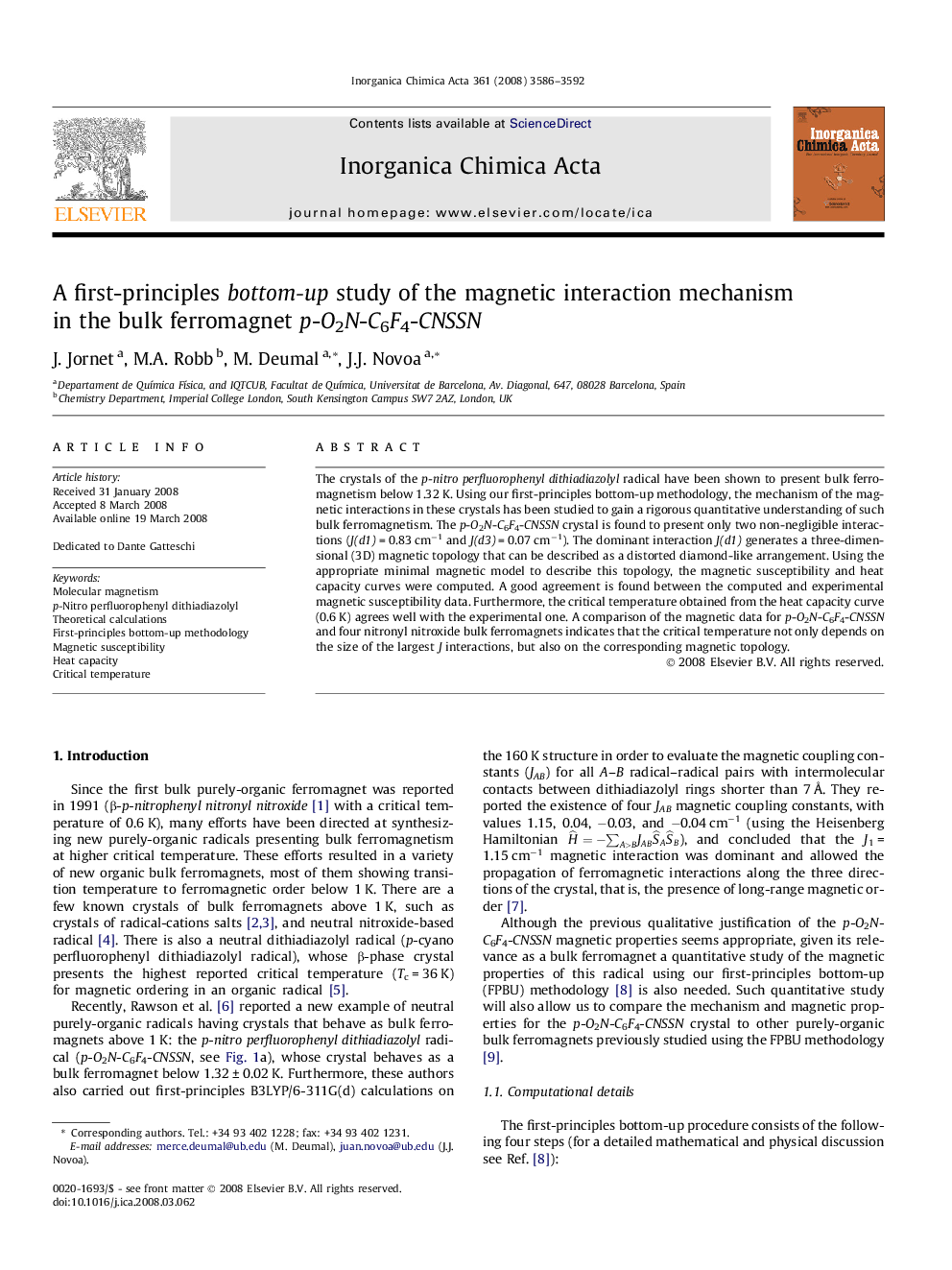| کد مقاله | کد نشریه | سال انتشار | مقاله انگلیسی | نسخه تمام متن |
|---|---|---|---|---|
| 1311539 | 1499210 | 2008 | 7 صفحه PDF | دانلود رایگان |

The crystals of the p-nitro perfluorophenyl dithiadiazolyl radical have been shown to present bulk ferromagnetism below 1.32 K. Using our first-principles bottom-up methodology, the mechanism of the magnetic interactions in these crystals has been studied to gain a rigorous quantitative understanding of such bulk ferromagnetism. The p-O2N-C6F4-CNSSN crystal is found to present only two non-negligible interactions (J(d1) = 0.83 cm−1 and J(d3) = 0.07 cm−1). The dominant interaction J(d1) generates a three-dimensional (3D) magnetic topology that can be described as a distorted diamond-like arrangement. Using the appropriate minimal magnetic model to describe this topology, the magnetic susceptibility and heat capacity curves were computed. A good agreement is found between the computed and experimental magnetic susceptibility data. Furthermore, the critical temperature obtained from the heat capacity curve (0.6 K) agrees well with the experimental one. A comparison of the magnetic data for p-O2N-C6F4-CNSSN and four nitronyl nitroxide bulk ferromagnets indicates that the critical temperature not only depends on the size of the largest J interactions, but also on the corresponding magnetic topology.
The crystals of the p-nitro perfluorophenyl dithiadiazolyl radical have been shown to present bulk ferromagnetism below 1.32 K. Using our first-principles bottom-up methodology, the mechanism of the magnetic interactions in these crystals has been studied to gain a rigorous quantitative understanding of such bulk ferromagnetism. The p-O2N-C6F4-CNSSN crystal is found to present only two non-negligible interactions (J(d1) = 0.83 cm−1 and J(d3) = 0.07 cm−1). The dominant interaction J(d1) generates a three-dimensional (3D) magnetic topology that can be described as a distorted diamond-like arrangement. Using the appropriate minimal magnetic model to describe this topology, the magnetic susceptibility and heat capacity curves were computed. A good agreement is found between the computed and experimental magnetic susceptibility data. Furthermore, the critical temperature obtained from the heat capacity curve (0.6 K) agrees well with the experimental one. A comparison of the magnetic data for p-O2N-C6F4-CNSSN and four nitronyl nitroxide bulk ferromagnets indicates that the critical temperature not only depends on the size of the largest J interactions, but also on the corresponding magnetic topology.Figure optionsDownload as PowerPoint slide
Journal: Inorganica Chimica Acta - Volume 361, Issues 12–13, 1 September 2008, Pages 3586–3592